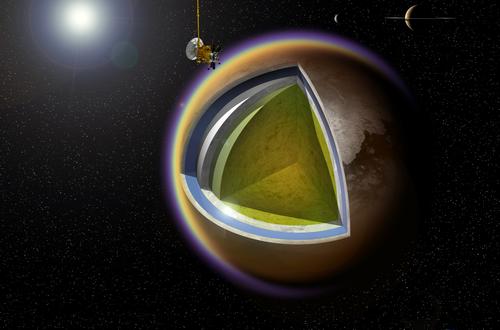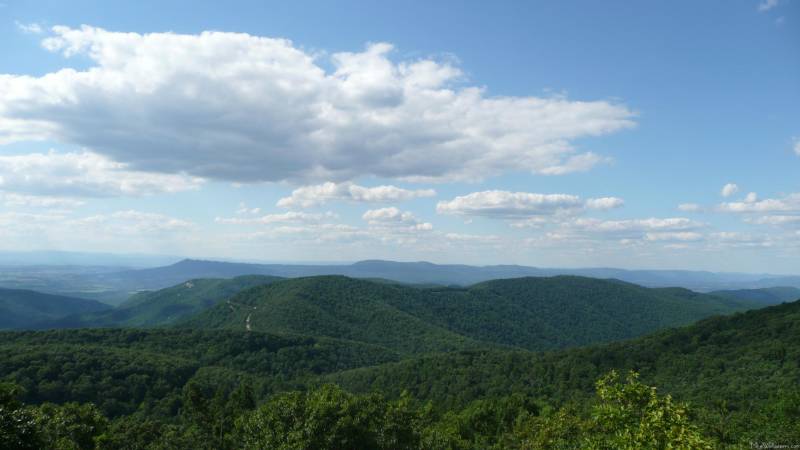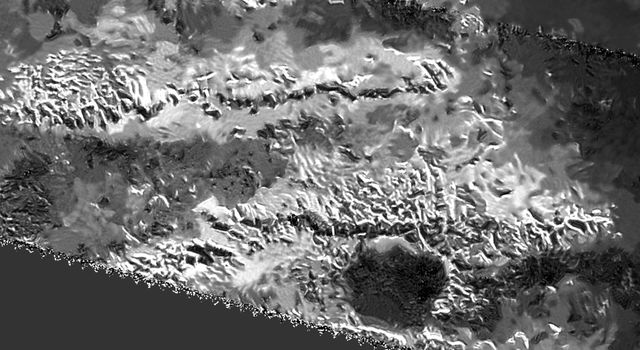In the winding-down period of its more than 12-year mission exploring the Saturn system, NASA’s Cassini spacecraft has spotted the tallest mountain of Saturn’s largest moon, Titan, a peak in the Mithrim Montes range near the equator that rises over two miles above the moon’s surface.
The Cassini spacecraft measured the peaks of Mithrim Montes using its radar instrument to penetrate the layers of thick, smoggy haze in Titan’s atmosphere.
The highest of the peaks is 10,948 feet high, and most of Titan’s highest peaks, which are found near the equator, are close to 10,000 feet tall. Comparably high mountains on Earth include Cathedral Peak in Yosemite, Mount Lassen, and Telescope Peak in Death Valley National Park (whose entire height, from sea level to summit, can be viewed in one stunning vista from the valley floor).
Extreme Mountaineering
The discovery of nature’s geological extremes—extreme heights, extreme depths, extreme scales—is something that may excite the adventurous spirit in us all. However, scientists have a more practical purpose for taking such measurements, in this case probing the origins and understanding the forces that form the solar system’s highest mountain ranges.

Though one might climb a mountain “because it’s there,” the mountains themselves are there for a more concrete reason. Mountains are structures formed by dynamic forces that actively push them upward—for example, the collision of tectonic plates, which is the driving force uplifting Earth’s tallest mountain ranges. Volcanism is another process that builds mountains. And, on some worlds, like the planet Mercury, uplifted features may be formed when the planet or moon cools and contracts, and wrinkles form on its surface.



